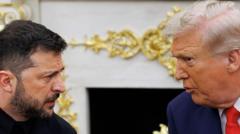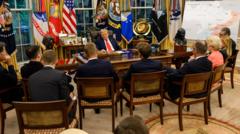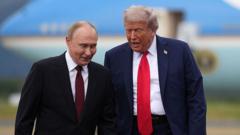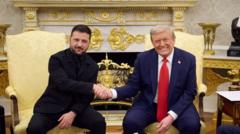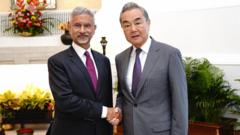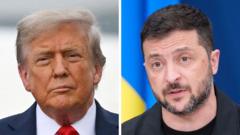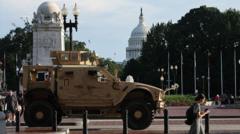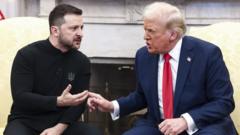With a crucial deadline approaching, India and the US are engaged in intensive negotiations over a potential trade deal, facing significant challenges particularly concerning agricultural access and tariff regulations. Experts indicate that a limited trade pact may be the most feasible outcome, but political and economic factors complicate the discussions.
Negotiations Intensify Over India-US Trade Deal Amid Hurdles
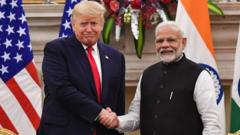
Negotiations Intensify Over India-US Trade Deal Amid Hurdles
As the deadline approaches, talks between India and the US are marked by contentious issues on tariffs, agriculture access, and market protections.
Negotiators from India and the United States are racing against time as the 9 July deadline set by the Trump administration looms, raising questions about the viability of their anticipated trade deal. While hopes for an "interim trade pact" linger as both parties engage in continuous dialogue, significant challenges remain, particularly around agricultural access and tariff regulations.
U.S. President Donald Trump has previously touted the prospect of a "big, beautiful" trade deal with India, suggesting it would pave the way for greater U.S. market access. However, as officials from both nations continue discussions, differing priorities are becoming increasingly apparent. Key issues cited by experts include the need for greater access to India's agricultural products while also addressing India's protective measures for its farming sector.
Indian Finance Minister Nirmala Sitharaman has expressed optimism regarding the discussions, but negotiators are still grappling with "very big red lines" primarily related to farm and dairy protections. The U.S. push for enhanced agricultural exports, including corn and soya beans, poses a particular challenge for India, which prioritizes food security and livelihoods for its millions of small farmers.
Furthermore, India's implementation of Quality Control Orders (QCOs) aimed at promoting domestic manufacturing presents another barrier to the negotiations, according to Richard Rossow of the Center for Strategic and International Studies. The U.S. has criticized these new import regulations, believing they create undue obstacles to access India's market.
The stakes are high, as farm trade between the two nations remains relatively modest at around $8 billion. With India primarily exporting rice, shrimp, and spices, and the U.S. exporting nuts and fruits, the potential for increased farm exports on either side could further impact negotiations. Experts caution that tariff concessions could compel India to relax its minimum support prices, endangering protections for its rural farmers.
The discussion around a limited trade agreement, akin to the U.S.-UK mini trade deal, has emerged as a likely path forward. This potential pact might include reductions on tariffs for various goods, bolstering U.S. interests in industries such as automotive, while also considering limited agricultural access through quotas. However, larger issues such as intellectual property and digital trade regulations may be postponed for future talks.
As the negotiations unfold, some analysts predict that instead of a triumphant trade agreement, both parties may settle for a more modest arrangement aimed at achieving incremental progress. This ongoing dialogue reflects the complexities intertwined with political and economic considerations that both nations must navigate in pursuit of mutual interests. While Trump's administration faces pressure, experts remain skeptical about reinstating tariffs, noting that any punitive measures could appear overly harsh and misaligned with broader diplomatic relations. Nonetheless, the potential for surprises in negotiations remains, warranting close attention in the coming days.

